If you, or someone close to you, is currently on a waiting list for NHS treatment in Wales, this article might be helpful for you. It’s intended to guide Members of the Senedd towards useful resources, enabling them to offer practical support to their constituents.
National 111 platform
The NHS 111 Wales - Planned Care website provides information about how long people in Wales usually wait for NHS treatment in different areas of health care (i.e. by speciality, such as dermatology, paediatrics or urology). Although it doesn’t provide personal waiting times, it does offer up-to-date data about waiting periods and differences across specialities and health boards. It provides a general idea of where a person may be on the waiting list.
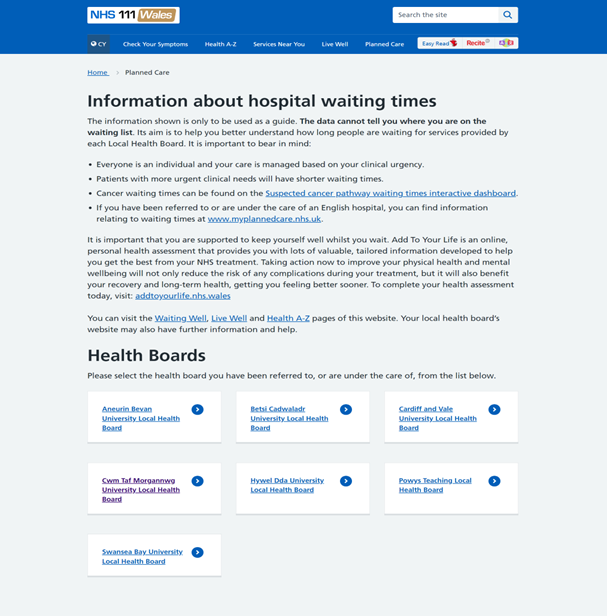
This national platform provides information about the average and longest expected waiting times for each speciality at every health board. For example:
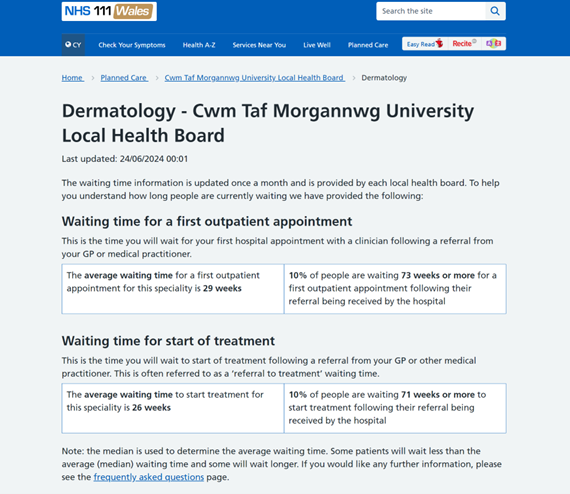
Waiting times can vary depending on the type of treatment and where you are. For example:
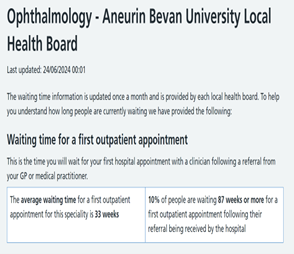
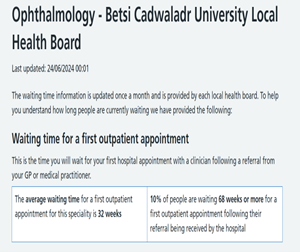
The website also includes links to other sites that give advice on how to stay healthy while you’re waiting for treatment.
Record number of patient pathways…
Information on the current state of NHS Wales’ waiting lists is published monthly (with a two month lag) by the Welsh Government. NHS activity data to monitor waiting lists is available on the StatsWales website.
The Senedd’s Health and Social Care Committee also publishes termly NHS Waiting Times Monitoring reports. The latest report emphasises that so far this Senedd, the Welsh Government has not been able to meet any of the target dates it had set for reducing NHS waiting times.
Senedd Research’s article ‘Reducing the NHS waiting list backlog’, which is updated monthly, tracks the Welsh Government’s progress against a set of five recovery targets (established in April 2022 to reduce NHS waiting lists in Wales)
In April 2024, the number of patient pathways (i.e. the number of patient pathways not the number of individual patients because some people have multiple open pathways) increased from just shy of 768,900 to 775,000, the highest figure ever recorded.
The situation is particularly acute for those who have been waiting over a year for their first outpatient appointment, with the number rising to 65,111 (although lower than the peak in 2022).
Figure 1: Number of patient pathways waiting over 53 weeks for their first outpatient appointment
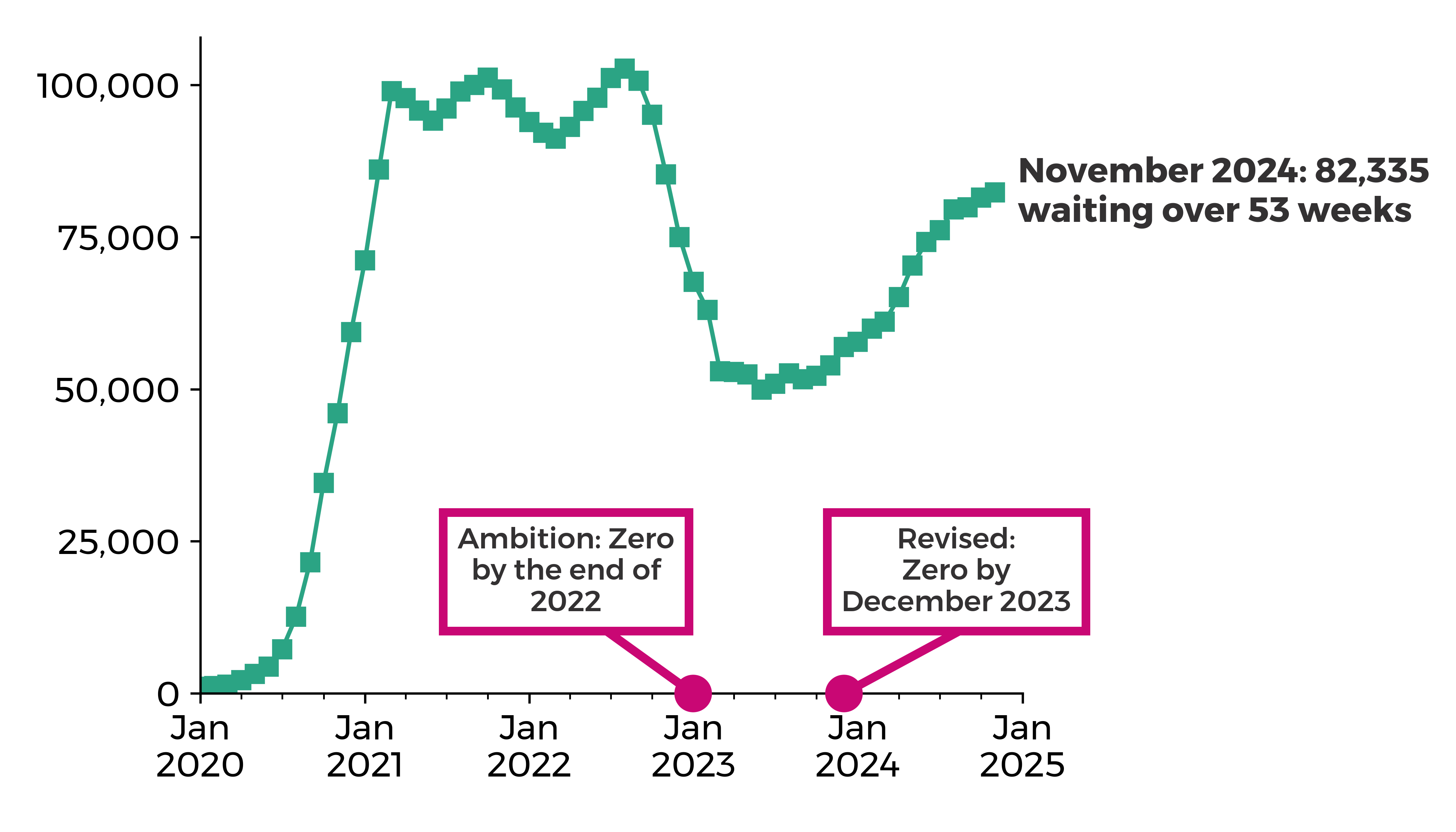
Source: StatsWales, Patient pathways waiting to start treatment by month, grouped weeks and stage of pathway
In April 2024, the number of patient pathways waiting more than two years for treatment also saw an increase, the first after twenty-four consecutive months of decline, standing at just under 21,300. Furthermore, about 148,200 patient pathways have been waiting more than a year for treatment (the recovery target is to eliminate one-year waits by Spring 2025).
The situation is equally concerning for diagnostic services and therapies. The number of patient pathways waiting for diagnostic services rose to over 108,100, with those waiting longer than the maximum target wait of 8 weeks increasing to just under 40,100. Similarly, for therapies, there were over 56,300 patient pathways waiting, with those waiting longer than the maximum target wait of 14 weeks standing at just under 5,300.
Figure 2: Number of patient pathways waiting 8 weeks or more for diagnostic services and over 14 weeks for therapy services
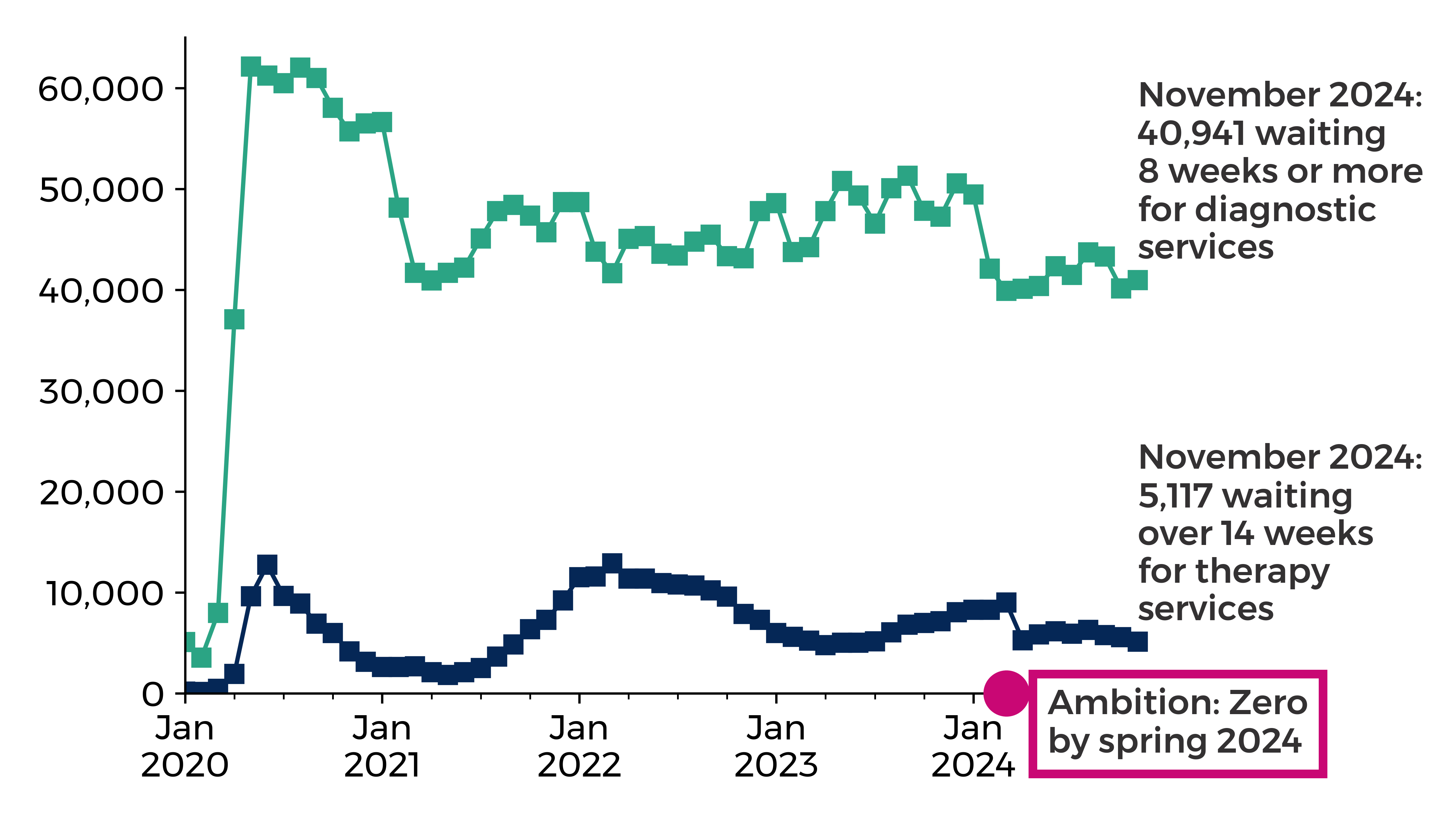
Source: StatsWales, Diagnostic and therapy services waiting times by month
Performance against the 62-day single cancer pathway target also decreased in April 2024 to 53.8%, falling short of the target of at least 75% of patients starting treatment within 62 days of first being suspected of cancer. The planned care recovery plan established a new target of 80% to be reached by 2026.
Figure 3: Percentage of people who received a cancer diagnosis and started their first definitive treatment within 62 days from the first point cancer was suspected
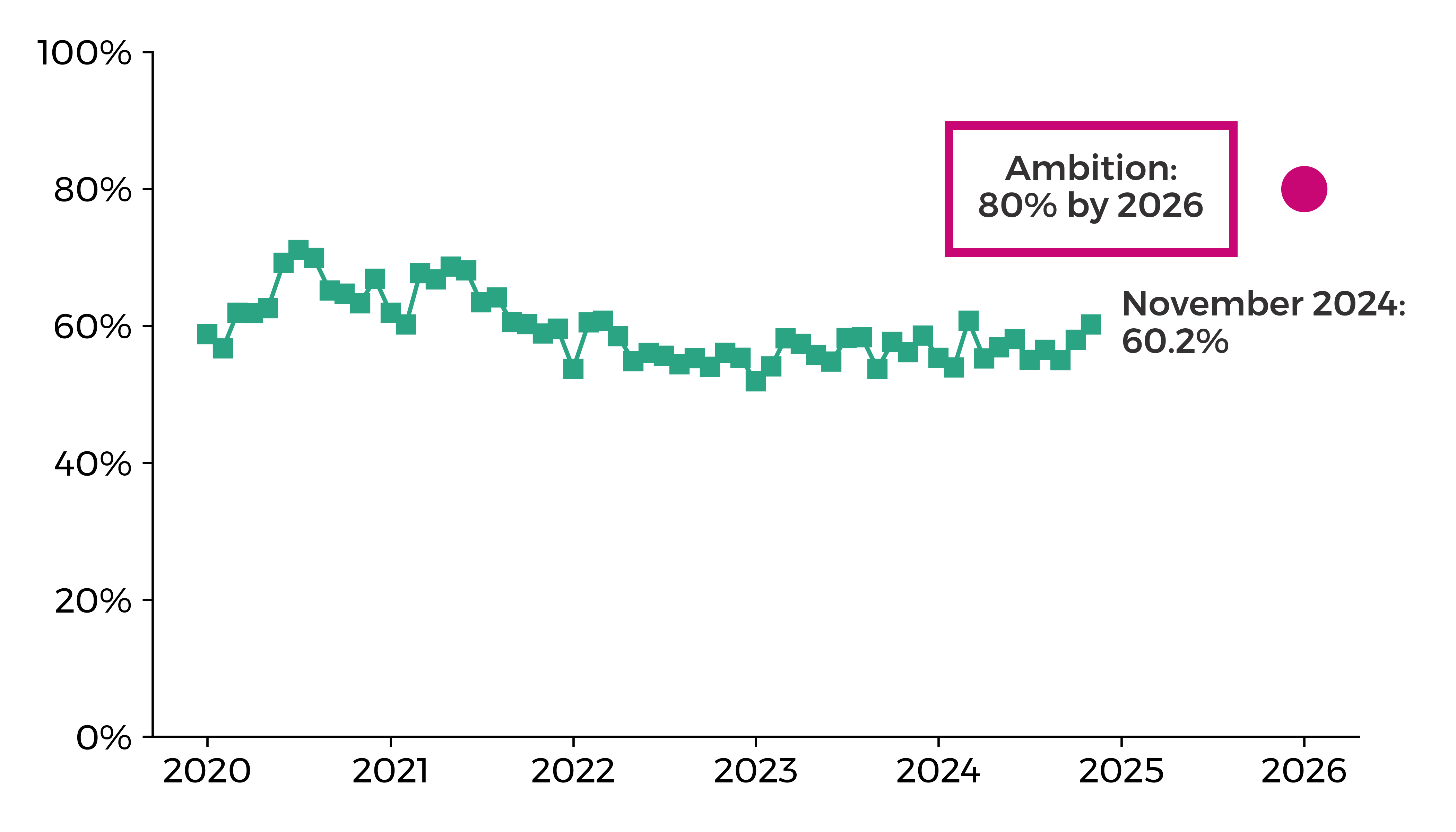
…but a reduced median waiting time
In brief, while the median time waiting to start treatment across all specialties had generally been around 10 weeks pre-pandemic, this increased during the Covid-19 pandemic and peaked at a record high of 29 weeks in October 2020.
Despite the challenges and the record number of patient pathways awaiting treatment, the median waiting time has seen a reduction from its Covid-19 peak. In April 2024, the median waiting time was 22 weeks, an improvement from the peak period.
Article by Sarah Hatherley and Joe Wilkes, Senedd Research, Welsh Parliament






